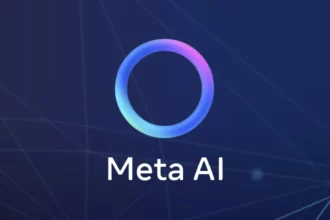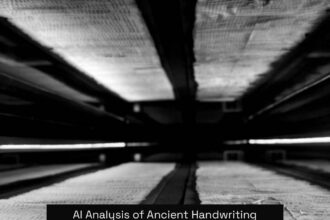AI writing detectors such as GPTZero are not credible and should not be used in serious situations to rely on accurate detection. Numerous cases prove these tools flag genuine human writing as AI-generated while failing to catch some AI-produced texts. The technical and conceptual limits behind these detectors raise doubts about their reliability.
Many users report false positives when submitting purely human-authored texts to AI detectors. For example, college essays written years before AI tools existed have been marked with over 90% certainty as AI content. Journalism professionals who tested their original work also found it flagged as AI. Poems and even historically significant texts like the Declaration of Independence and Ted Kaczynski’s manifesto have been erroneously identified as AI-written. This evidences the detectors’ frequent misclassifications and questions their credibility.
Conversely, AI-generated content often evades detection. Experts skilled in AI writing techniques create texts that pass current detectors with human-like scores. Developers have created tools that deliberately bypass detectors by slight alterations. For instance, rewriting AI content by changing small words significantly lowers the AI likelihood score assigned by detection tools. This highlights the detectors’ vulnerability to manipulation and the false negatives they produce.
| Issue | Evidence | Impact |
|---|---|---|
| False Positives | Pre-AI essays marked 90% AI; historic documents flagged | Unjust suspicion; loss of trust in detection tools |
| False Negatives | AI content rewritten passes detectors as human | AI misuse overlooked; undermines fairness |
The root cause of these unreliable detections comes from deep technical and conceptual challenges. Detecting AI-generated writing is intrinsically difficult because AI models evolve rapidly and vary across uses. Theoretically, any detector would have to be “smarter” than the AI it seeks to detect. Yet, with models becoming more advanced, detection tools fall behind. Some experts claim that, beyond a certain point, it is impossible in principle to distinguish AI-generated text from human writing, especially as AI gains the ability to simulate diverse writing styles.
Furthermore, many AI detection systems, including GPTZero, rely heavily on heuristic measures such as complexity and sentence variation. While these can offer rough indicators, they cannot definitively prove authorship. Some users point out the detectors’ results can seem random or arbitrary. They often produce unreliable judgments, flipping between high and low AI-likelihood scores for similar texts.
“The logic of GPTZero is effectively a coin flip with arbitrary thresholds, resulting in inconsistent outcomes.”
These systems sometimes only reliably detect when users copy-paste directly from base AI outputs. Minor editing or paraphrasing often bypasses detection. Consequently, many believe these detectors serve more as a tool to pressure users to admit AI use rather than truly verify authorship.
Real-world consequences of relying on these tools can be severe, especially in education and professional settings. Students submit genuine work only to be accused of cheating due to inaccurate detection. Professors report conflicting results across multiple AI scanners. False accusations damage reputations and academic careers unfairly. Additionally, some educators argue that fostering collaboration with AI tools benefits learning far more than punitive detection policies.
Legal and ethical concerns also loom large. It remains difficult to prove beyond reasonable doubt that a text was AI-generated. This will likely lead to disputes and legal challenges if institutions depend heavily on flawed AI detectors. Relying solely on such tools risks ethical violations against students and employees falsely accused.
Experts suggest better paths forward involve shifting from reliance on AI detection tools towards integration and collaboration with AI. For instance:
- Teaching students and professionals to use AI as a brainstorming aid and writing assistant.
- Focusing on human-AI collaboration to improve creative processes rather than trying to eliminate AI involvement.
- Developing alternate detection methods, such as analyzing document metadata or behavioral patterns rather than just text characteristics.
- Encouraging transparency rather than secretive detection, supporting open discussion about AI use.
Some new tools aim to detect unique human contributions or check behind-the-text attributes instead of only analyzing language. This approach shows promise but remains in early development stages.
To summarize key points:
- AI writing detectors like GPTZero currently lack reliability due to false positives and false negatives.
- Detection faces fundamental challenges as AI models improve and mimic human writing styles.
- Using these detectors for high-stakes decisions risks unfair consequences.
- Legal and ethical risks arise from ambiguous proof of AI authorship.
- Human-AI collaboration and enhanced detection methods offer more viable futures than sole reliance on flawed detectors.
Q1: Why are AI writing detectors like GPTZero unreliable in detecting AI-generated text?
These detectors produce many false positives and negatives. They often flag genuine human writing as AI-generated. At the same time, sophisticated AI-written text sometimes passes as human. Their methods rely on shaky complexity measures that fail against simple tricks.
Q2: Can GPTZero accurately distinguish between AI and human writing in all cases?
No. GPTZero and similar tools struggle with varied writing styles and edits. AI content with minor changes can slip through, while human text can be wrongly flagged. Detection results often conflict or show wide probability ranges, making them inconsistent.
Q3: What are the risks of using GPTZero in serious or official investigations?
Using GPTZero risks false accusations. Innocent authors might be labeled dishonest. It can harm students, professionals, and legal cases where evidence must be exact. Its errors can damage trust and reputations unfairly.
Q4: Is it possible for AI writing detectors to keep up with AI models like GPT-4?
Current detectors lag behind AI advancements. As AI grows smarter, detecting it reliably becomes harder. To beat detection, users tweak outputs. In principle, perfect detection might be impossible without tools smarter than the AI itself.
Q5: What are better alternatives to relying solely on AI writing detectors?
Human-AI collaboration offers a promising path. Educators and users should focus on teaching AI use skills, creativity, and transparency. Policies encouraging responsible AI assistance may work better than flawed detection tools.




